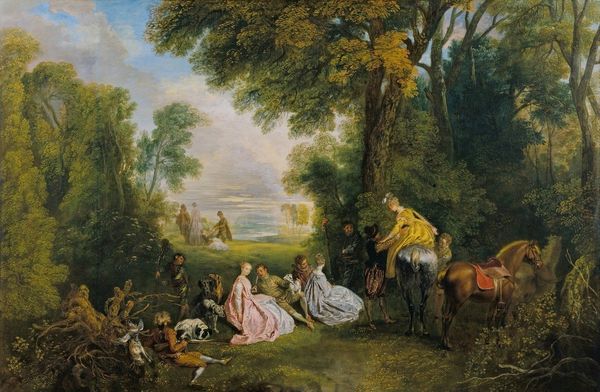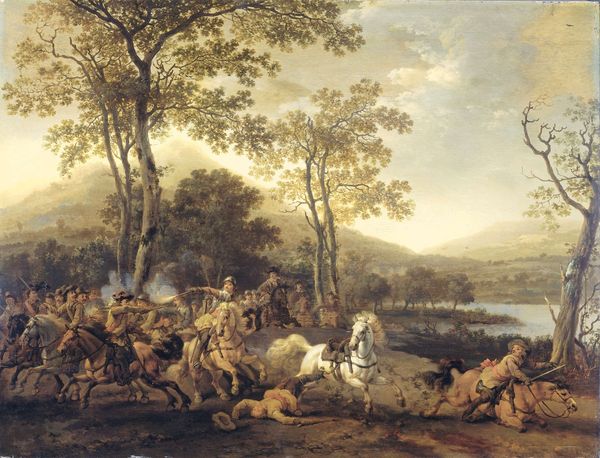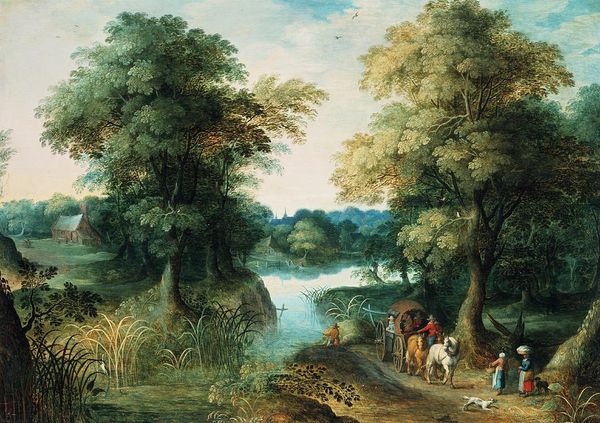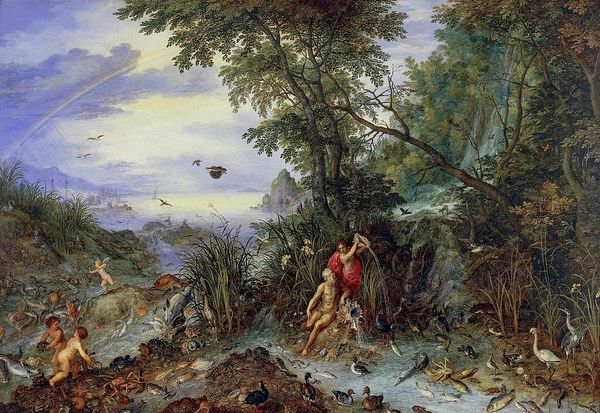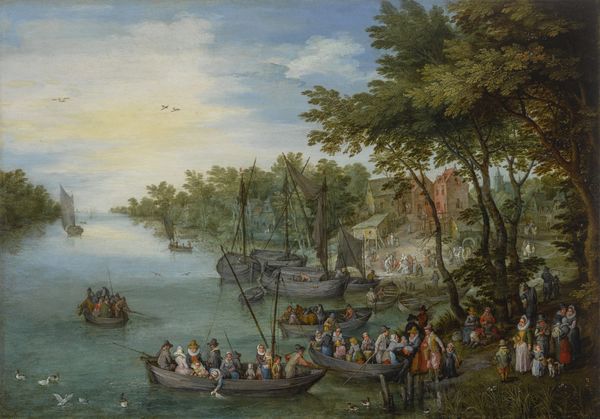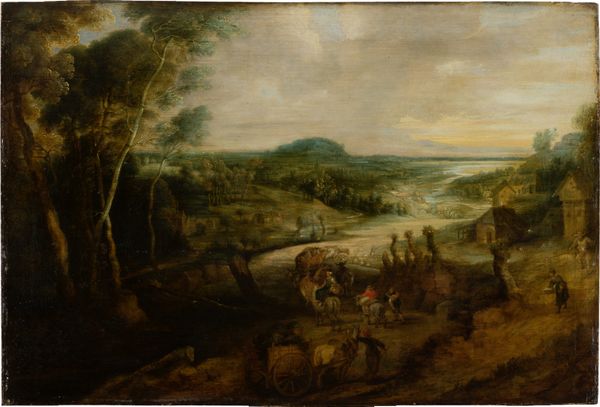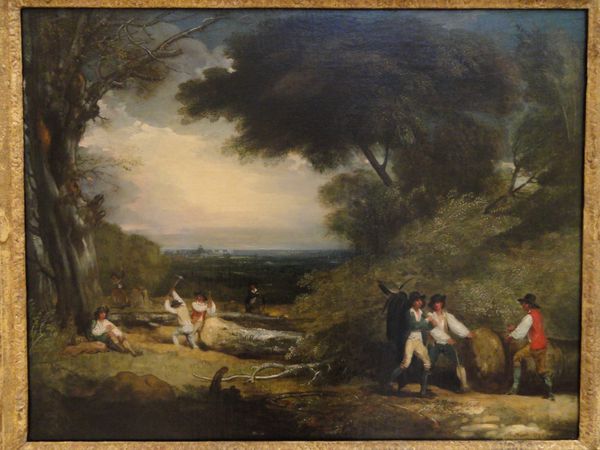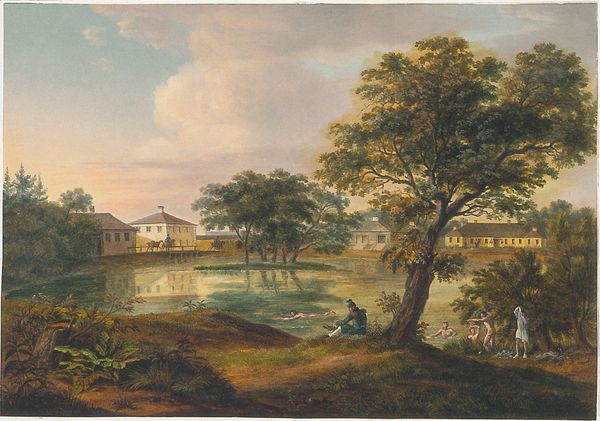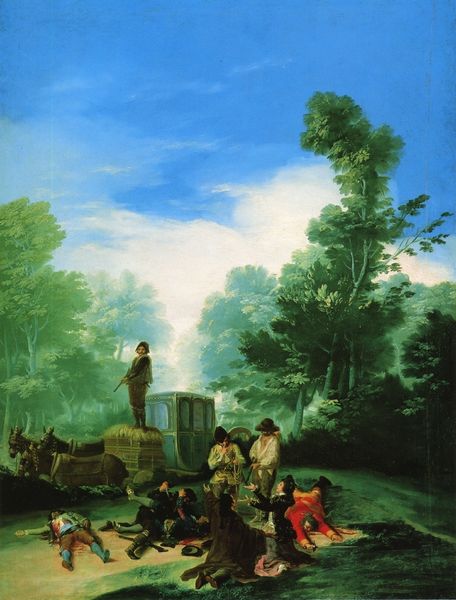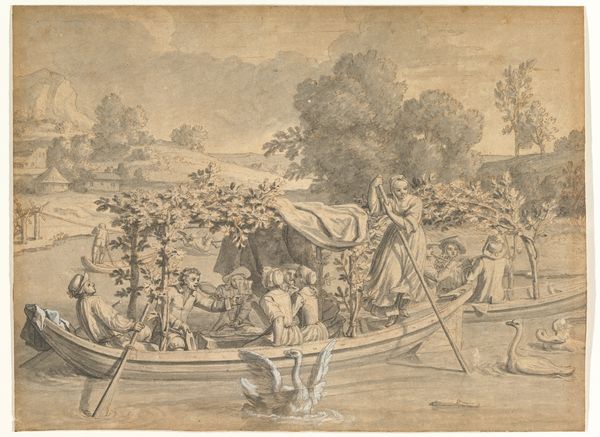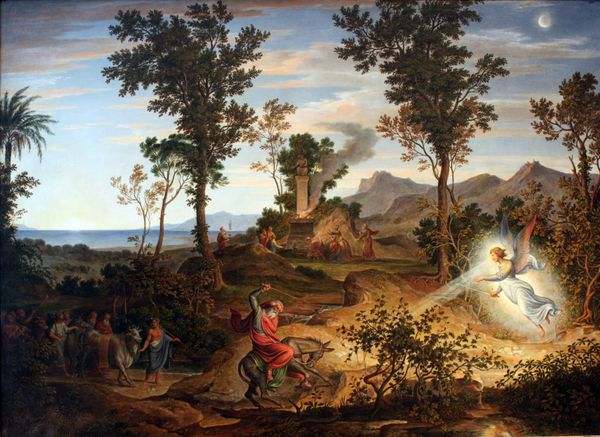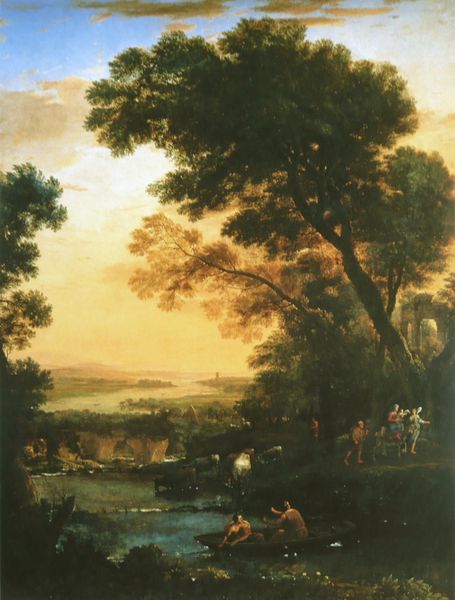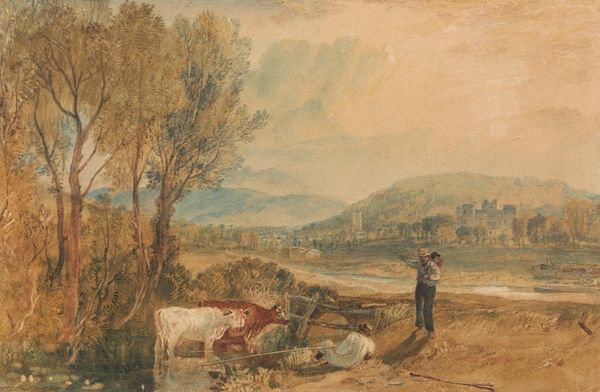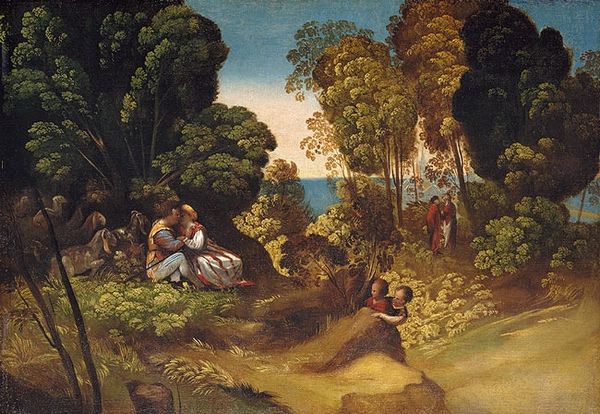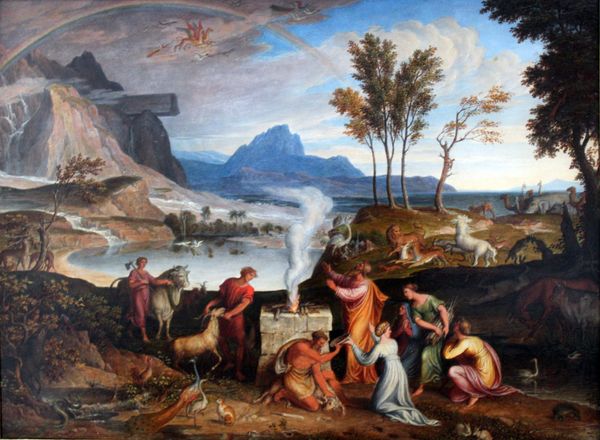
Dimensions: overall: 61 x 83.8 cm (24 x 33 in.) framed: 72.4 x 95.9 x 5 cm (28 1/2 x 37 3/4 x 1 15/16 in.)
Copyright: National Gallery of Art: CC0 1.0
Curator: This evocative work is entitled "The Exhumation," created around 1890. The artwork employs both watercolor and colored pencil. Editor: It certainly makes an immediate impression. There’s a strange drama unfolding in the foreground, balanced by that serenely picturesque background of water and trees. It's both unsettling and calming, wouldn’t you say? Curator: Absolutely. What's particularly interesting to me is how this scene resonates with late 19th-century anxieties around gender and social order. The fallen woman, the apparent distress, the almost performative mourning of the standing figure – all suggest a complex narrative of societal expectations and their consequences. Editor: It’s like a stage tableau. You've got the societal elements represented, but then something like the class relations are immediately brought up with the character holding the supposed medical document with the man and woman from darker skin color are off to the side next to a horse carriage. I suppose the narrative here can come from the person's bias too depending what society and context that person resides in. It can certainly spark conversation with each passing year to discuss such relationships that exists in a specific timeframe in our collective memories. Curator: Precisely. The landscape itself can be interpreted through the lens of Romanticism, that's an intellectual movement tied strongly to the socio-economic dynamics. As the people move around this world to try to build a better place, it causes destruction or maybe rebirth that society doesn't necessarily see? How would it challenge current social institutions if these people don't exist to tell their story or voice? Editor: The power dynamics at play are certainly hard to ignore. The painting challenges us to think critically about visibility, or lack thereof, through marginalized narratives. We must push those institutions forward. It prompts questions about who gets to control the narrative and whose experiences are valued in the historical record. Curator: Ultimately, "The Exhumation," for all its potential, can offer very contemporary voices, inviting us to critically re-examine the visual legacies of art. Editor: Right, because if the roles were reversed in the picture, there's so much to unpack to see who these figures are outside their archetypical stereotypes that this particular scenario has been painted with. A single picture could change everything or nothing all at the same time!
Comments
No comments
Be the first to comment and join the conversation on the ultimate creative platform.
